The Ministry of Defence (MOD) is pursuing “a deployable and persistent wide area ASW search capability” built around the new Type 92 Sloop – an uncrewed surface vessel – and the Type 93, a drone submarine, according to an industry notice.
Imagery associated with the programme suggests the aim is to monitor the GIUK (Greenland-Iceland-UK) gap.
The initiative, called Project CABOT, seeks to “accelerate the RN’s pivot to autonomy with a specific focus on Anti Submarine Warfare,” integrating “lean-crewed, remote-operated and autonomous airborne, surface and subsurface vehicle, sensor and node.”
According to the MOD, “Project CABOT is the plan to deliver remotely operated and autonomous ASW capabilities, allowing UK to pivot to vision of ‘Digitalisation of the North Atlantic’.”
This project builds on Project CHARYBDIS, previously delivered by the Submarine Delivery Agency (SDA) under the Defence Innovation Unit’s “ASW Spearhead” programme. Recent “technological and digital breakthroughs achieved by the (UK) ‘NATO ASW Barrier’ Smart Defence Initiative” have also helped pave the way for CABOT’s next steps.
According to a Pre-Procurement Notice published in the UK government’s Contracts Finder, the MOD is launching an early market engagement to “commence a conversation between the Royal Navy and Industry Partners on capability’s that will accelerate the RN’s pivot to autonomy”.
The notice clarifies that Project CABOT will proceed in two phases:
Phase 1 – ATLANTIC NET
Delivering “ASW as a service” through a Contractor Owned, Contractor Operated, Naval Oversight (COCONO) model. “Lean crewed, remotely operated or autonomous uncrewed systems, delivered by an industry mission partner,” will gather “acoustic data, triaged by AI/ML algorithms,” then transmit it to a “secure Remote Operations Centre (ROC) for analysis by RN staff.” This setup aims to “significantly increase mass and persistence at sea whilst releasing traditional RN platforms for other tasking.”
Phase 2 – BASTION ATLANTIC
Shifting to a government-owned, government-operated (GOGO) model in which the Royal Navy “own and operate USVs (Type 92 Sloops) and UUVs (Type 93 Chariots).” This phase also considers “a host of other sensors, to deliver mass and persistence in the North Atlantic,” as well as exploring “UK developed Underwater Battlespace Area Denial (UBAD) capabilities.”
As part of CABOT’s broader heritage, the SDA has commissioned the Defence and Security Accelerator (DASA) to seek “innovative related technologies and sub-systems,” inviting submissions from across the Technology Readiness Level (TRL) spectrum.
The broader aim
The MOD emphasises that the objective is to “build a better understanding of current market capability and potential developments to inform decisions on how best to go ahead and deliver Project CHARYBDIS.”
This could include evaluating “opportunities for disruptive future capability,” determining “the required level of modularity for future systems,” and clarifying “choice of interfaces.”
Although this process does not yet commit the MOD to any specific development path, it highlights the Royal Navy’s drive toward scalable, autonomous anti-submarine warfare solutions.
When and indeed if fully implemented, Project CABOT aims to bolster the Royal Navy’s capacity to detect, track, and deter submarines across the North Atlantic, particularly around the vital GIUK gap.
By employing drone ships and submarines in tandem with advanced sensor networks and AI-driven analysis, the Royal Navy stands to enhance its maritime surveillance, free up crewed warships for other missions, and fulfill an evolving strategic requirement to protect sea lines of communication.
At the UK Defence Journal, we aim to deliver accurate and timely news on defence matters. We rely on the support of readers like you to maintain our independence and high-quality journalism. Please consider making a one-off donation to help us continue our work. Click here to donate. Thank you for your support!


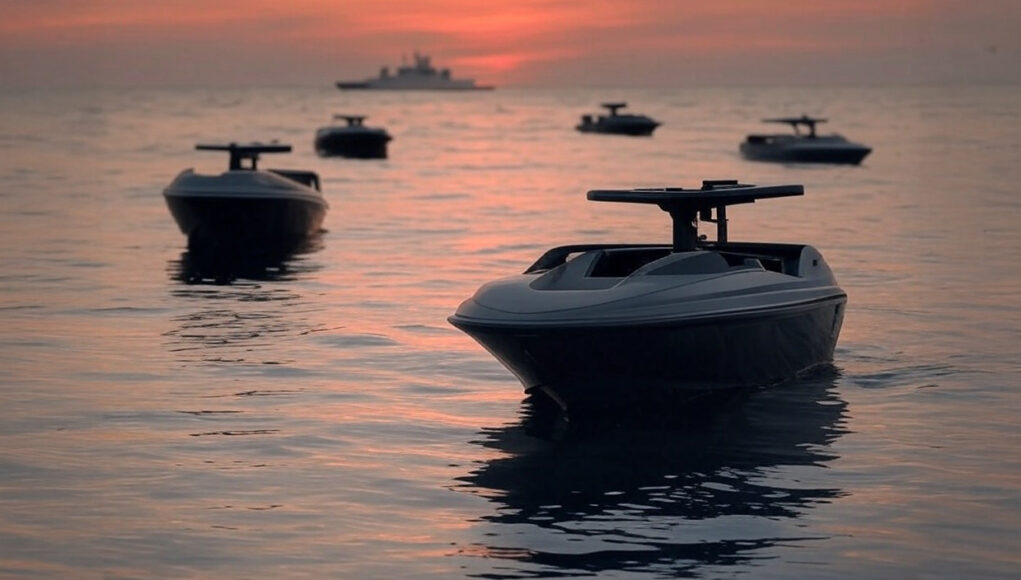
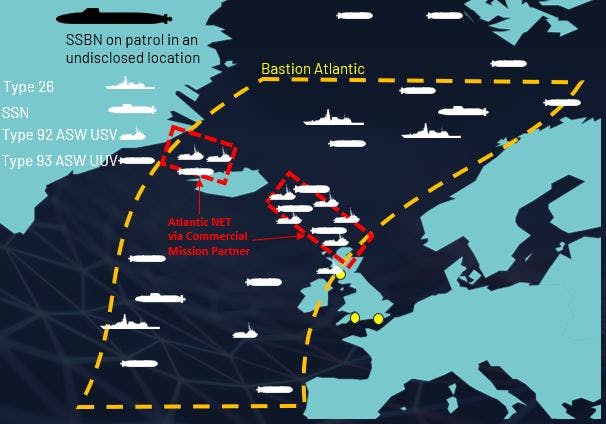
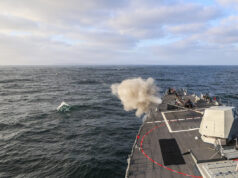
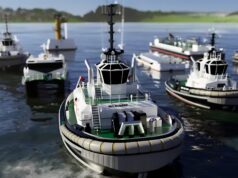
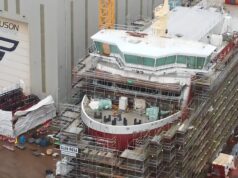
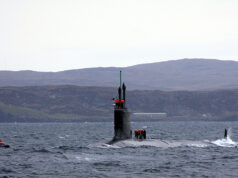
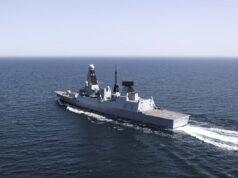

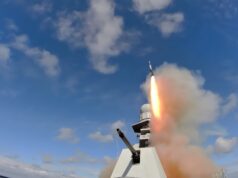
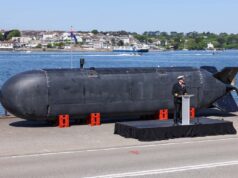
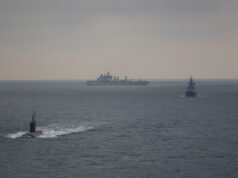
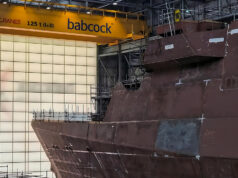

I am always wary of MoD pronouncements saturated in business lingo.
If the MoD were serious about this idea, which they are not really it just more Main Building guff, then the RN would deploy ocean surveillance SWATH platforms with TAS high in the Norwegian Sea backed by a furth purchase of Poseidon. Job jobbed. All this talk of sloops and drones is just civil servants doing work to justify taking their monthly stipend.
What’s to say that the Type 93 won’t be a SWATH USV with a towed array?
If you look at the timeline on the requirement, the contractor operated stuff needs to be in the NA by the end of the year, so it’s certainly ambitious.
The image used is the silhouette of the ARCIMS USVs, which can be fitted with a small towed array. It isn’t suitable for oceanic operation, however, so something bigger is needed.
Likely a Damen FCS 4008 like XV Patrick Blackett, or its big sister the FCS 5009.
I would ideally aim for something around the 70m mark, i.e. around the size of the WW2 Flower class. The reason why is simple, the North Atlantic will not be merciful to anything much smaller than that. You need to either go big enough to ride the swells, or small and solid enough to survive them. Damen already offer ships in that size class, so little modification would be needed to get something workable.
It would be able to be optionally crewed, which is likely to be the most attractive option anyway (a small crew on board to monitor systems, but data processing etc handled remotely). With a suitable aft deck, you could stick a shipping container with VLS cells on, as the Dutch are planning, in addition to one with a sonar etc…
I don’t think that armament beyond torpedoes (and maybe not even those) is necessary for these ship/boats.
The key requirement will be the seakeeping and engine power to operate a large towed array in all weather, all year round.
That probably means some novel hull forms of the type developed for the offshore industries, combined with very robust build.
Also not sure you need a full 70m length if all it is doing is ASW. Minimal need for crew, the defining dimensions will be the size of towed array chosen and the hull volume needed to accommodate it.
I’m leaning towards a 40-50m catamaran or SWATH, but not an expert on hull design so not entirely sure.
I think stability’s the reason for going SWATH — it’s more stable than a monohull for the same size, so you can go smaller and cheaper and have more of them. I’m sure there will still be crewed ships and maritime patrol aircraft as well.
The Flower class was way too small for Atlantic ops. They were designed only for coastal ops, but used elsewhere due to the dire urgency & lack of available apropriate escorts. Might be slightly more viable if unmanned.
70 m UUV mothership – replacement for Hunt class / B1 Rivers / Archers?
utter nonsense. it’s hard assets that are needed, not toys Britain has spent a fortune on the technology. above and below the waves the cetus submarine excites me and could be a massive force multiplyer. especially in the underwater cable protection needs. I would love to know how fast they can be turned out.
Thank God someone else has said if. I work in a job that has hard lines, dedicated ESN network, dedicated microwave, full mobile network priority, and dedicated GEO-SAT satellite coverage and we lose connection on the outskirts of London, Manchester and on many motorways. How will you maintain that in the middle of the Atlantic? We are talking of needing to operate in the middle of the Atlantic with the weather, time of day and availability to contend with. The ability to act in a known manner as well as not act in others. Humans are the only operators who can be on-site. Communications is only reliable anywhere on the globe if it’s US owned.
Interesting…still Microwave. Thought that was more vulnerable to interception.
the usual bull crap as the MOD try to avoid why the u.k. forces are in the state that they are we’re going to do this and that never comes to anything unless fads like oroteus and Stirling castle count
the MOD would be better served by investing in hardware that does matter and not throw it away on motherships and cable watching fly by night whacky ideas. the oroteus should have been a stone
I’ll believe when I see it
Wow, is this the first we’ve heard of these??
• Type 92 Sloop – unmanned surface vessel
• Type 93 Submarine – unmanned underwater vessel
The two models make sense, and avoids investing in systems until they’re proven to actually work.
Think so. First saw them yesterday.
First I’d heard of them.
more rubbish produced by a spotty underling in a long forgotten dusty broom cupboard in the MoD. these ideas are just extremely bad news about something that wouldn’t be seen for generations. wacky and ill thought out click bait.
Let slip the sloops of war!
A welcome development and seems eminently sensible but I do wonder whether this is an actual plan, or just another press conference announcement that will go quiet and then be dropped in 18 months as per the Littoral Strike Ships or (probably) the Type 32
This is exactly what we need to beef up the navy and we can do it fast without having to wait a decade for more frigates.
Perfect to replace the USA in the North Atlantic.
If they want Greenland for unspecified national security reasons they will have to be responsible for GIUK (Greenland-Iceland-UK) gap. It’s not like Canada is going to be responsible being the 51st state…
Fairly obvious that CCP and RF plan to exploit the polar region in addition to the submersible naval patrols that they already do now…
A blatant contravention of the Arctic status as a marine refuge and science study region.
Sounds good, but also, sounds like jam in a decade.
Depending on how it works out, this could be an excellent cost effective and important addition to the UK’s defences. If done right and properly funded as regards the equipment and numbers.
…. and there’s the kicker Rob – if properly funded. That’s always the issue with successive governments that seem hell bent on doing defence on the cheap.
I hope they have the ability to run away, when russian ships start trying to capture them
Or instead shoot back or plough into said Russian ship at 50+ knots and with an explosive charge, turning the ship into yet another submarine!
Maybe they’ll call in air support. Not sure they can just blow up ships that interfere with them or what would happen the first time they get caught up in a trawler’s nets?
Considering the capabilities of the newer Russian boats, be they bombers, SSNs, or those decidedly naughty dedicated Intel gathering/potential subsea infrastructure attacking types that Russia has been so keen to develop, the more ears and eyes in the North Atlantic, the better.
That’s not even considering that big nuclear-powered strategic attack drone that they apparently have, which is potentially a very nasty weapon indeed. Extremely hard to find and stop, due to its very nature.
Is Britain really “Planning to have a fleet of these” though or is it just another concept that will cost billions and lead to yet another dead end. Triton, Teranis, Vixen, T32 and so on and so forth.
Lets see what the SDR comes up with.
This is a no-brainer tbh. We don’t need old fashioned warships with people on board. They’re ineffective and a waste of time and resources. The vast majority of the Navy could be replaced with a far more effective and cheaper fleet of drones. Look at what Ukraine has done with just this. I welcome these changes, as do most.
I can see a role for both manned and unmanned platforms especially in the littorals where it’s easy for someone to sabotage an un manned system, but in the massive empty North Atlantic surrounded by allied nations with Russia the only conceivable advisory and submarines the main target these seem ideal.
The MOD seems to have finally realised that accepting claims by BAES that the T26’s will have an average operational availability of 240 days a year (including 120 days at sea) over their planned 25 year service life is too risky to base the defence of the UK on. They made similar claims for the T45’s, and we know how badly that turned out.
Anyway, it’s clear that 8 T26’s aren’t enough, but there is no money for any more. The idea of some lean manned (please not unmanned) OPV size
T92 “sloops” with good sonar capabilities (and a Merlin sized flight deck) being deployed at key points around the UK does make a lot of sense. If a suspicious contact is made then a RAF P-8A MPA can speed to the scene. Of course the weak point in the plan is that we only have 9 MPA’s.
Why does anyone think this is cheaper?
Will these really be fully autonomous without a crew on the other end in a portacabin somewhere in the UK? Experience with RAF drones is that there are more crew involved in flying drones than with flying a plane!
Will there really not be a few mother ships out there to attend when these break down?
I’m all for progress but when the phrases unmanned and AI everyone seems to think that costs are pence in the pound for the full fat version and I am unconvinced that is the case where you still have to have the capacity to act offensively against the opponent.
I do think that if we were serious about this then another buy of P8 is needed to increase the fleet size to the 12-14 mark where we could generate the kind of persistent numbers that are required. OK these are commercial frames so will have far higher availability than the antiques roadshow NINRODs ever would have done.
Exactly, It’s like thinking China is the world leader in producing Eco Friendly Cars…. Yeah right, they have some 3000 Coal Powered Power Stations providing all the power to produce them whilst cornering the entire Worlds EV Market. We all need to wake the Feck up and soon.
Trump knows this, sees this and says this, We just blindly follow the Thunbergs of this World.
China is also the world leader in deploying renewable energy solutions, both wind and solar as they don’t let ideological dogma get in the way of science.
P8 can’t really be persistent, though, it only has about 12h endurance at absolute maximum.
I’d consider this more like a mobile addition to the seabed sensor network, able to be relocated as necessary. The drones could stay out for months at a time with hull volume dedicated entirely to the towed array and fuel.
They can also be built all round the UK like the Project Vahana boats were, in the sort of shipyards that usually do local ferries and CTVs for wind farms.
Something like RFA Proteus could serve as a mothership to a bunch of these – take them out to sea, let them go, and monitor them. I wouldn’t imagine they would need much human intervention if they are just ploughing back and forth in the north Atlantic towing a sonar array. Then the mothership can pick them up again to refuel or for maintenance. But I agree that you still need some way to act if something is detected. Perhaps the mothership could carry a Merlin as well?
Drone fields/barrages will soon be the norm, especially in war zones.
♾️❤️☮️
Whilst drone ASW might be doable I have to ask whats to stop Russian or even Chinese subs interfering with said drones – say cutting the sonar line and even stealing the towed array ( or even steathily boarding and taking gear offboard. Given China and Russia don’t give a stuff about legalities/niceties it’s going to happen as sure as the sun rises each day.
Because the drone ASW is obviously going to detect said submarines approaching it. After reporting the details for a Poseidon or T26 to intercept it’ll then simply power-up its engines and take evasive action to avoid the submarine catching it.
Pinching towed-arrays off submarines by other submarines already happens, by both sides.
Betting men would back a cert. So l back these being built in Scottish yards along side ferries. You might see the first one in the water by 2054, and deployed by 2070. Thats after cost over runs of several billion pounds, and an argument in the UN about Blue Water freedom of navigation by other nations who might bump into one. We do certainly live in Dreamland.
At last, some common sense focus on smaller vessels capable of adding value in a war rather than the obsession with large light frigates.
The danger as always is that these will never be built and becomes expensive concepts. There is no reason why some semi autonomous ships couldn’t be built in commercial yards and into service and evolve from there – but we won’t we’ll spend 10 years in assessing PowerPoints.
Guess you didn’t read the article where it states that commercial operators needs to prove these work before the RN buys and begins operating them…
The RAF seem to do drone warfare quite well. I have seen how they do it by watching the current documentary on channel 4. I don’t see why the RN can’t go the same way.
This is an exciting initiative! The use of drone vessels could really change the dynamics of naval operations. I hope this leads to better security and efficiency in patrolling the Atlantic.
It’s fascinating to see the UK expanding its naval capabilities with drone technology. This could really change the dynamics of maritime security in the Atlantic. I’m curious about how these vessels will be integrated with existing fleets and what implications this has for international relations.
This is an exciting initiative! I believe investing in drone vessels will enhance our naval capabilities significantly. It’s crucial to stay ahead in maritime security, especially in the Atlantic. Looking forward to seeing how this develops!
Hopefully, things learnt under Project Cabot eill feed into the design of the T83s. https://ukdefencejournal.org.uk/number-of-new-type-83-destroyers-yet-to-be-decided/
Load of old rubbish!!!Get real,people.By 2040 the RN will have 1 mothballed carrier,6 type 26,5 Type 32,3 or 4 Batch 2 River class and 3 or 4 Darings grimly hanging on.MOD will say the Royal Navy is FFBNW …SHIPS!!
We. Cant even secure the English. Channel fgs from invading illegals
Stupid comment.
Stopping illegal immigrants is NOT the job of the Royal Navy. That’s for Border Force and the Coastguard to do.
So we expect this new ‘Sloop’ of ours – which from the depiction provided seems to be the size of a relatively modest power boat – will be operating in waters that are known to be among the most severe in the world. If I recall correctly during WW2 a 10,000t cruiser had its forward gun turret roof literally ripped off by the mountainous seas that can be encountered there and yet we are to believe this mere boat can handle it?
It’s a good job these things are unmanned because I would pity any poor sailor facing such a prospect.